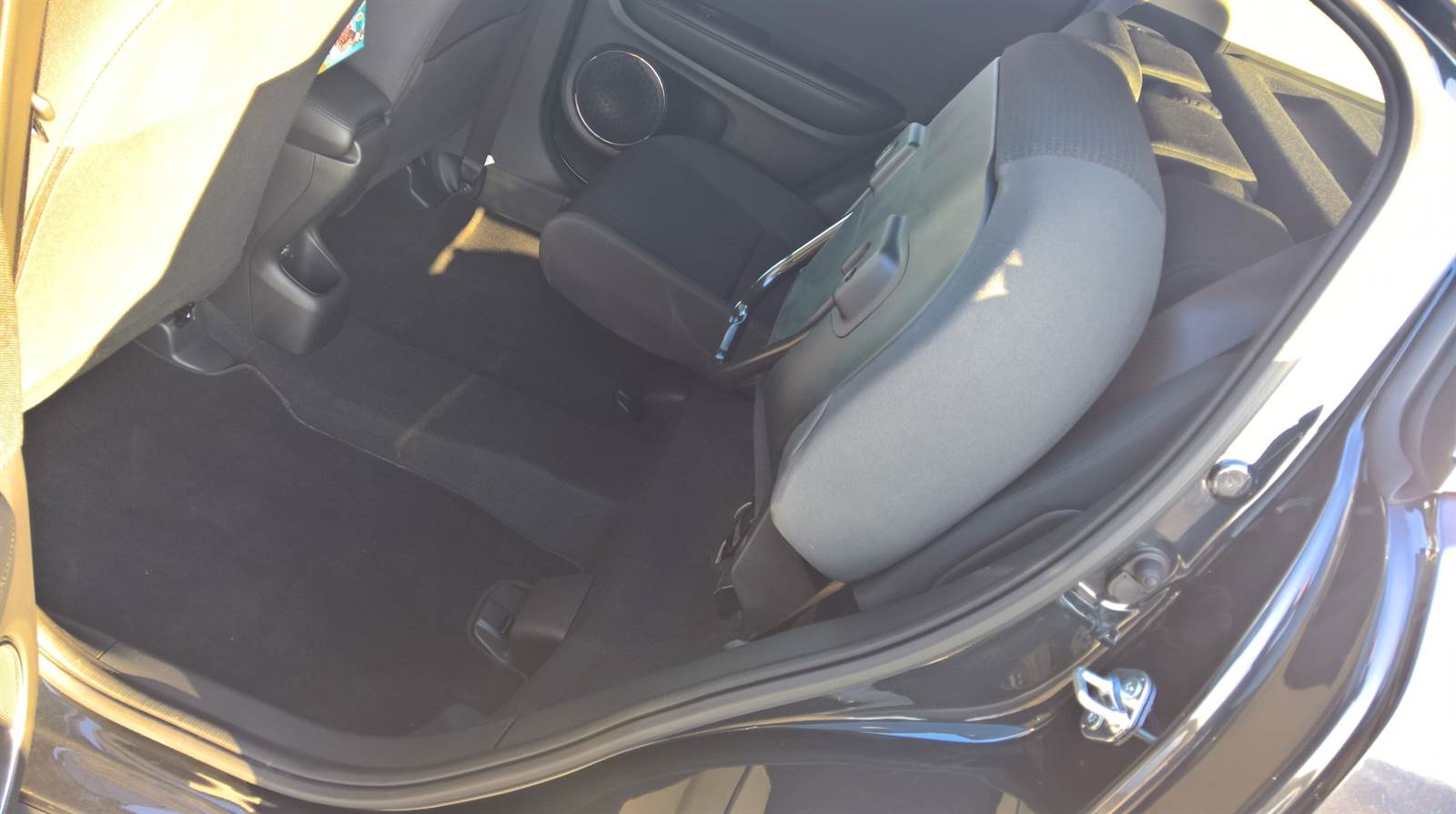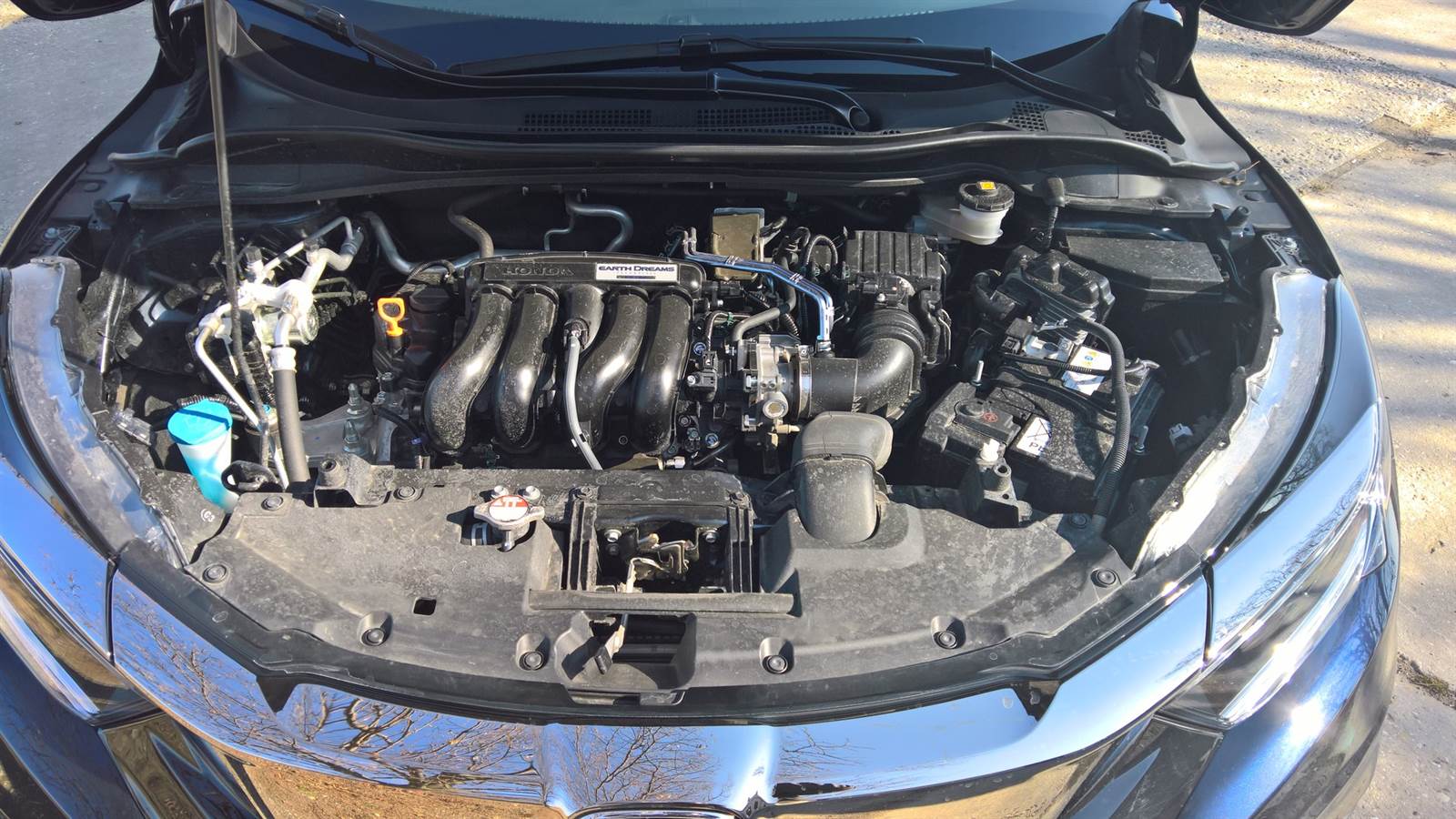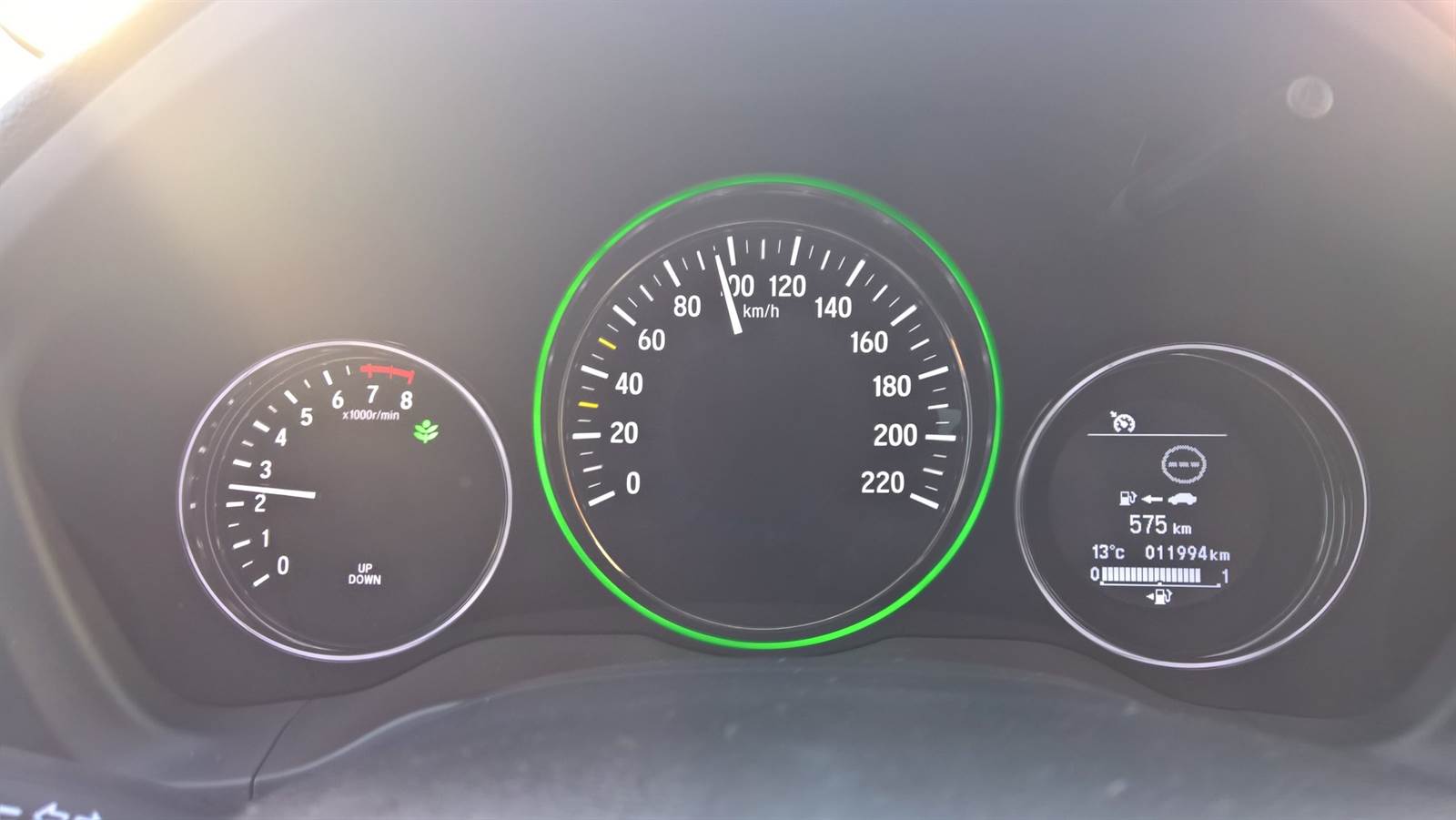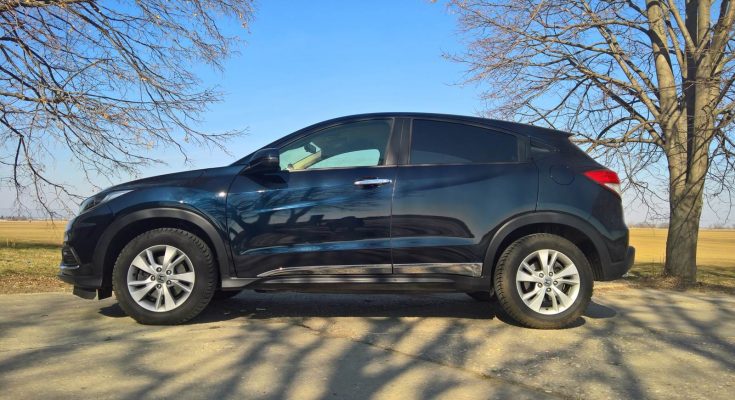The first generation HR-V was a revelation that was at least a decade ahead of its time. Three-door small SUV with a touch of sports gene. You couldn't buy anything like it at the time, and the HR-Včka was a phenomenon on the road that everyone turned to. The abbreviation HR-V is the English abbreviation for "Hi-rider Revolutionary Vehicle".
However, the currently second facelifted generation HR-Včka is just a classic small urban crossover and has many rivals in this category, before which it has to show its strengths.
In terms of design, the second generation is very different from its predecessor. First of all – it is no longer a three-door "coupe" but a classic 5-door body, and secondly – you can no longer choose the drive of both axles, which is a great pity for many active people.

It looks sleek from the side and the hidden handles of the rear handles evoke a certain amount of sportiness. From the back, it is a typical supporter of the miniSUV category with large lights and a higher loading edge. From the front, a classic HONDA with a cosmic design that was once brought to us by the Civic model.
The Honda HR-V facelift is very subtle – the front mask consists of a matte radiator grille and a wide chrome strip with an embedded logo. The chrome part is also incorporated in the design of the front headlights, with which it forms a single unit. The graphics of the LED daytime running lights and the appearance of the front bumper have also changed. The tested model has a beautiful dark blue metallic, but it only stands out in the sun. Otherwise, everyone around thought that the car was black.

In the interior, a better, built-in 7" tablet with the Honda CONNECT system has been added, which finally also supports MirrorLink/Apple CarPlay, and the tested equipment also includes Garmin navigation with the Garmin PhotoReal function, which displays the nearest intersections and exits through real images and provides lane indication for a clear orientation. The resolution is decent, but the system could stand a little more speed, as some items from the menu are waiting for a few seconds. As for connectivity – I have no reservations here. The connectors are also in the glove box, the armrest and you'll even find a video input via the classic HDMI connector located on the shelf under the center console, along with two USB charging inputs/outputs and a 12V socket.

The interior and all controls are very well made. All surfaces where a tired hand or foot can rest are softened, and the only complaint is the hard plastic of the entire top of the dashboard. The seats are comfortable, softer, have decent lateral guidance and finally in this category – an adjustable headrest for the driver and passenger in the transverse direction. The three separately adjustable air conditioning vents in front of the passenger are also nice.
The entire air conditioning panel is controlled by touch, which is perhaps a little impractical from a safety point of view, because you simply always have to look where you are "tapping" with your finger. Otherwise, it looks impressive even when turned off. The center console, together with really "smart" holders for drinks or phones, is elegant and holds everything that a modern person needs when driving a car. The head of the gear lever seemed ridiculous to me at first glance, but despite its simple shape, it is excellent to work with and the honest mechanical gearbox is one of the best on the market. It's so beautifully close to the wheel that shifting is fun. The steering wheel also deserves praise – it has a pleasant thickness and very well laid out control elements that you can control completely intuitively after a few km.

Sitting behind the wheel is more for smaller figures. With my 186 cm, I had a problem even with the seat in the lowest position and the steering wheel at the very top. I simply did not see any indicator lights or warning signs that are in the arch under the instrument panel. There is room in the front and back, and when I sat down by myself, I felt like I was sitting in a classroom of a larger car. However, the price for this is shorter seats. The 60:40 split Magic Seats rear seats adjust seamlessly and with one simple movement you can flip the seat upwards to gain space behind the front seats. For example, to transport a larger flower in a pot or several suitcases that no longer fit in your luggage compartment. This has a capacity of up to 470 liters if you use the rear seats in the standard seating position, and up to 1,103 liters up to the edge of the windows when the rear seats are folded down.

The tested and also basic drive unit is a 1.5-liter gasoline atmospheric i-VTEC with an output of 96 kW (130 ps) and a torque of 155 Nm. It works with a six-speed manual transmission and accelerates from 0 to 100 km/h in 10.7 seconds. This new gasoline engine is equipped with new technologies to reduce friction (so-called "plateau honing")
and increasing engine efficiency. The outer shell of the lightweight aluminum pistons is also uniquely coated to reduce friction. The result is a total reduction in friction during the movement of the pistons in the cylinders. Low-viscosity oil (0W-20), special two-stage oil pump relief valves, special low-resistance piston ring design and lightweight crankshaft also contribute to overall excellent operating efficiency.
It is an honest "atmosphere" that can drive relatively briskly with decent consumption. After starting up, it makes itself known for a while and then goes silent. During normal economic driving, the engine is quiet and has no problem driving even at low revs. The indicator of optimal gearing shifts the 6th gear already somewhere at 55 km/h, depending on the load, it also shifts when downshifting. However, when you need to overtake or when you have the urge to test the sharp cam of the classic VTEC engine, it makes itself known. It should not be forgotten that there is no turbo to take care of the sudden increase in power. You need to downshift nicely by two steps and go up into the whirlwind of high revs. The engine spins up to 6500 rpm and the cam switching is almost imperceptible. I remember the old VTEC engines from the 90s, where over 4000 rpm. there was a kick like a turbodiesel. However, high speed does not automatically mean power. Despite the relatively high paper output, this engine is a bit lacking in torque.

This motorization is therefore intended for urban use and for customers who drive more modestly. In return, it will offer them carefree driving in every mode, regardless of consumption. In terms of reliability and service costs, this engine will also be better than the same unit with a turbo. Consumption stabilized at the end of the test at 6.3L/100km, which is an excellent value. The car was 50% occupied by 4 people and I drove relatively briskly. Here is the advantage of volume and a naturally aspirated engine versus a small volume with a turbo. A smaller turbo engine would have significant differences in consumption, and the 1.5 VTec Turbo is only available in the Sport trim , where it is seconded by a stiffer chassis with 18″ discs.
An optimally tuned chassis works well with the engine, thanks to which the HR-Včka behaves like a small hatchback. Despite the balloon tires on 16" discs, it holds very well in turns and does not allow itself to be derailed even by sudden changes of direction. I did not notice the understeer and on the broken road, the rear part kept an exemplary track despite the simple axle. The damping of lateral bumps could be better, but that's the price for a bit of that sportiness.

Assistance systems are present in various forms. The system for active braking in city traffic, which is included as standard in all equipment, warns of the risk of a frontal collision and even activates emergency braking in case of driver inactivity to reduce speed as much as possible. In practice, with a simple cruise control (not adaptive) it works in such a way that you have a set speed, the car approaches another vehicle in front of it and starts braking sharply at a dangerous distance. It is necessary to get used to it and especially not to have open hot coffee in the central tunnel…

The tested model also had lane departure warning, which warns if the vehicle leaves a lane without a direction sign. However, I was unable to activate it while driving at night. Maybe thanks to our not very well marked district roads.
The traffic sign recognition system, which works with the limiter, is also quite unusable here. Since it also needs a speed limit end sign, most of the time it shows a speed limit that has long since ended at the first intersection. What I was noticeably missing from the safety equipment was the indication of vehicles in the blind spot.
Overall, the new HR-V reminded me of a small and nimble hatchback and felt very good both in and out of town. If you like its design and technology, it is an excellent choice for everyday driving… in every way.
| Technical specifications | Honda HR-V 1.5 i-VTec |
| Engine type: | Spark plug |
| Cylinders / valves: | 4 / 16 |
| Displacement (ccm): | 1 498 |
| Highest power (kW(k) / rpm) | 96 (130) / 6,600 |
| The highest twist. torque (Nm / rpm): | 155 / 4,600 |
| Gearbox: | 6-st. manual |
| Acceleration 0 – 100 km/h (s): | 10.2 – 10.7 |
| Combined consumption – WLTP (l/100 km): | 5.7 – 5.8 |
[rl_gallery id=”4637″]




